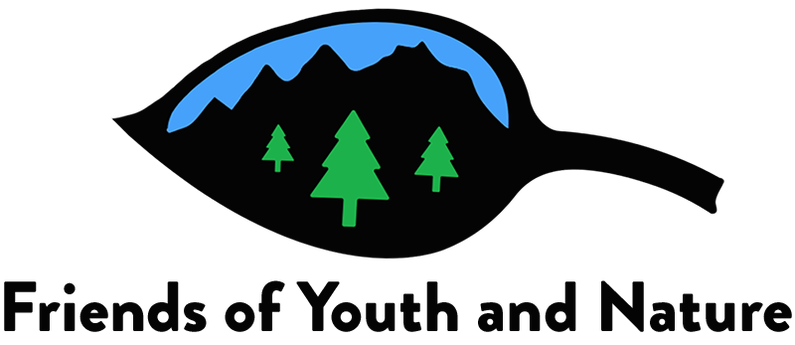|
Tips to help you connect your family to nature!
|
|
Nature guides are a great way to identify critters. These girls are using a bird guide to help them identify local birds likely to be seen along the Gunnison River. Colorado is famous for its great outdoor activities. Many of these activities require money or experience to get involved. Snowboarding, rock climbing, climbing 14ers, or riding snowmobiles or ATVs require both. Getting started in outdoor activities can be easier than you think, though. It is widely known that being outdoors helps our physical and mental health. So, here are a few easy and cheap ways to get outside on your own, or with others. Hiking: One of the best outdoor activities to start with is hiking or trail walking. The only real required equipment to start is a good pair of shoes. This cannot be stressed enough. Poor fitting or flimsy shoes can result in some frustrating experiences like blisters and sore feet. It can also result in safety issues from poor footing in steep or slippery trail areas. This does not mean you have to purchase expensive hiking boots or shoes, but sturdy, well-soled shoes with a good fit will be comfortable and safer. Next, and very importantly is to know where you are going. The COTREX app is a great trail application that has many hiking, biking and other trails all over Colorado. It includes important trail information such as distance, elevation changes, surface etc. Second, start with trails closer to your community because these are typically well signed and shorter. These will help you get a sense of how you feel on a variety of distances in different topography. Bring water and extra clothing layers for changes in temperatures. Before you know it, you will have gained experience, stamina and a little more equipment. You will be ready for longer day hikes on our public lands. Some of the most memorable experiences are being outdoors and seeing, hearing, smelling, or feeling nature around us. A short trail walk in the same location in winter, spring, summer and fall will result in amazing differences in what you experience. Tracks and Scat Hunting: It is surprising how many species of wildlife are close to, and even inside, towns in Colorado. Recently, I was on one of the concrete trails early in the day in Montrose after a slight snow fall. I was excited to see fox tracks, and a beaver track including drag marks where the beaver had pulled a tree across the trail. In addition to small mammals and rodents, there are great bird and waterfowl tracks all around communities. Even more fun than tracks by itself, is to add scat identification. Identifying scat (or poo), and the creature associated with it, is a surprising amount of fun. Different families of animals will have different scat based on what they eat and how it is processed. Herbivore scat looks very different from carnivore or omnivore scat. In addition to tracks and scat, there are other ‘signs’ you can find like trees felled by beaver, or deer antler rubbings on trees, or the mud slide of a river otter. It is a little like a nature investigation. Best of all, there is no real cost to get started because track and scat guides can be pulled up online, obtained at many wildlife or public land offices, or you can also check out scat and track guides at your local library. As with all activities involving wildlife, the goal is to not disrupt the actual animal, so observe from a distance or just look for the sign and know they are around. Star Gazing: Similar to tracks and scat, astronomy guides are available as apps or online. You can also find printed materials at your local library. Make sure you have an app, or guide, that covers your location and the current time of year. The key to star viewing is clear night skies with as little ambient light as possible to not wash out the constellations (so get away from streetlights, vehicles, etc). One of the easiest constellations to identify is the Big Dipper. National and state parks have astronomy programs you can also attend where the local astronomy clubs bring out amazing telescopes that bring the planets, comets, or other astronomical features more into focus. These and other programs also add information to make your future star gazing even better. Outdoor Discovery Apps If you have a ‘smart’ phone, you can also use several outdoor applications in outdoor discovery. Applications like Agents of Discovery, INaturalist, Merlin, geocaching and others are very user friendly, and allow you to choose what you want to focus on. Some have missions or challenges, others are to help id any type of natural item out there (plants, animals, rocks, birds, you name it!). Even though we all need less screen time, this is a way to be outdoors and focus on what is around us with the assistance of technology. In addition to the above recommendations, other cheap and easy outdoor activities can be as simple as flying a kite, or making our own ‘Outdoor Bingo/Scavenger Hunt’ where you can look for things like a rock the size of a toaster, any bug under a rock, or any bird with white and black feathers. Another recommendation is to find a mentor who is already doing things you are interested in, and ask them to show you how to get started. When I first moved to Montrose, a co-worker showed me all his favorite trails, and areas to hike or bike. Many of those trails mean a lot to me. I have since taken my kids and hopefully soon my grandkids out to the same areas. You don’t need to be an expert or wealthy to spend time outdoors, there are many ways to get started and the benefits are endless!
6 Comments
(Left) Students from local schools visit Ridgway State park during the banding season to learn about bird migration. They observe the biologist remove the birds from the mist nets, identify the species, measure and age them, and fit them with numbered metal leg bands. They also learn about the obstacles for migrating birds, how to use binoculars to identify birds, and native plants in various local bird habitats. (Right) It is always a thrill for a student to release a newly banded bird. Migratory birds take cues from nature to know when they should head south for the winter. Typically, these are birds that depend on insects and aquatic life as their primary food sources—food sources are not available during winter. In spring, the birds return to their northerly breeding grounds where food is again plentiful. It’s thought that diminishing food sources, fewer daylight hours, and lower temperatures provide birds with indicators they need to begin fall migration to warmer climates. It may also be that many species of birds are genetically programmed for this behavior. Because birds can’t tell us the reasons they migrate or when, wildlife biologists track bird migration a variety of ways. In addition to live migration maps that use radar imagery to identify vast populations of birds migrating during spring and fall (visible online at Birdcast.info), observers on the ground verify the radar imagery as they report sightings of migrating birds using Ebird. Both of these citizen science applications are important for gathering migration data, but bird banding and nano-tagging are even more important indicators of migration. On the ground tracking also occurs at seasonal migratory bird banding stations. In Colorado there are at least a dozen banding stations. At these stations, ornithologists operating under federal banding permits, set up mist nets and capture birds to be banded. After applying a permanent aluminum leg band with a nine-digit number, birds are released; but, not before a thorough evaluation is completed. This includes wing and tail feather measurements, weight, sex and species identification, and aging. All of this data is logged online on the US Geological Society’s North American Bird Banding Program’s website, where anyone can report a found bird with a leg band to determine where and when it was banded. Some stations are now fitting migratory birds with tiny Motus radio-transmitter tags attached to a lightweight elastic harness. The harness fits over the feet and across the bird’s back under feathers and carries a geolocator tag about the size of a pinky fingernail. Like an aluminum leg band, the tags are numbered and recorded for specific birds. When a bird is caught in a mist net, the banding team will log the recapture and look up when and where it was originally banded, thereby gathering basic information about migration. Motus tags, while expensive and not yet widely used, transmit better data to researchers looking at migration routes, stopovers, and final destinations. All of which provide important data sets to help conservation of migratory species and their necessary habitats. Birds, bats, and, even insects, that have been fitted with Motus tags can be monitored if they fly within a few kilometers of a Motus receiver tower. The Motus system puts information gathering on the fast track. Instead of relying on a bird to actually land in a net multiple times, in one country or another, tagging and tracking birds with nanotags allows real-time monitoring of species. About Migratory Bird Banding Stations Depending on the stopover location, the weather, and the quality of habitat, birds can stay for a few days or a week or two—enough to get them ready for their next travel day. Locations rich in habitat and food sources provide the best locations for banding stations. Ridgway State Park, which has hosted an annual fall bird banding station since 2006, sees a lot of Wilson Warblers (and other warblers) during its banding season. The station is open the first two weeks of September, starting the day after Labor Day. After that, the federally-permitted bander heads to Grand Junction for one month of banding at Grand valley Audubon Nature Preserve, Connected Lakes, until mid-October. Stop in to see these tiny little birds up close and personal at a banding station. Wilson Warblers leave breeding grounds in the Yukon and travel to wintering areas in Central America. On each stopover during its +4000-mile journey, a bird will gain up to 9 percent of its body weight to fuel the next leg of its flight. To date, banding stations on the Western Slope of Colorado are not nano-tagging migratory birds, but are expected to in the future. Stations in Montana and Canada are using them in limited capacity. Mary Menz is a naturalist, Colorado Native Plant Master, and author of two books on wildflowers. The most recent is Wildflowers of Colorado’s Western Slope, available at area book sellers. Many little hands release a Wilson’s warbler after it was banded at Ridgway State Park. Students observe and assist bird banders as part of the Rocky Mountain Bird Banding Project at Ridgway and at the Audubon Nature Center at Connected Lakes in Grand Junction. The banding operation occurs annually in early September. Chick-a-de-de-de-de, chickadee in the tree, I see a chickadee, chickadee in the tree. Making up quick songs while hiking with little kids is a fun way to connect and remember birds. Chickadees are a favorite for kids and adults of all ages because the words we use to describe their song is also their name! Another fun bird call to listen for is the Ruby Crowned Kinglet. It is called the “cheeseburger bird” because the mnemonic for its song is “cheeseburger, cheeseburger, cheeseburger”. Mnemonics (words to help us remember) are fun and easy to learn. Visit Augubon.org to learn some tricks on remembering bird songs. (https://tinyurl.com/remembering-bird-calls) How do you spark that interest in nature with your kids? Summer is a great time to start thinking of ways to get your young ones out there and engaged with the outdoors. It could be as simple as buying a pair of binoculars and a basic bird book, or taking walks in the woods to just look and listen. Get them prepped with anticipation by going to the library and checking out some books about nature. There are many children’s books that can introduce kids to the wonder and beauty of nature. Some even provide a variety of cultural interests. One example is a children's book about the endangered Golden-cheeked Warbler and how it became part of a movement to embrace Indigenous languages in Mexico (tinyurl.com/the-tale-of-one-tiny-songbird). Image courtesy of Audubon Society. (image courtesy of audubon.org)
Audubon is all about getting out there and appreciating nature and birds! Their website has so much information; it is worth a browse to get a few DIY summer camp ideas. Their page - JUST FOR KIDS! (Or kids at heart) “aims to bring together activities from across Audubon’s national network of environmental educators, including the classroom curriculum Audubon Adventures, plus related DIY activities and content from Audubon’s editors.” (tinyurl.com/audubon-afterschool-fun). There are even events for family participation – to help you and your kids contribute to citizen science projects. Here is an example of a virtual event on the site: tinyurl.com/audubon-afterschool-fun One doesn’t need to be an expert; maybe just being a “student” along with a child is a fun way to learn and bond together. The more kids love and understand our natural world, the more they will want to protect it. www.audubon.org/news/easy-ways-get-kids-birding Cornell Lab of Ornithology also has many resources on their website. Check out their bird sleuthing curricula (www.birdsleuth.net) which uses bird watching to get young people enthused about science and nature. This Bird Sleuth video (www.youtube.com/watch?v=d5OPTvrHh0U) encourages students (or anyone!) to get outside, watch birds, and take part in citizen science. There are several citizen science projects through Audubon and the Cornell Lab of Ornithology, such as the great backyard bird count. www.birdcount.org . Also, a fun app to use on your phone while out in the field is iNaturalist. www.inaturalist.org/. It has a variety of uses to not only record what you see with pictures and descriptions, but other users can help you identify your plant, bird, bug, or whatever else you’ve seen in the natural world. Who doesn’t enjoy seeing a butterfly, flitting around some flowers? Because they are pollinators, it is important to protect these wonderful creatures. Since they are an “indicator species” (project the health of the environment), awareness of their importance is increased. Ridgway State Park started a citizen science project through the Colorado Butterfly Monitoring Network in 2017. Interested volunteers attended a training at the Butterfly Pavilion in Westminster, Colorado in 2015. There are now five routes in the park consistently monitored by volunteers. The idea is to expand this to other areas on the Western Slope next year. If you’d like to learn about starting a route for you and other families, please visit butterflies.org/research-and-conserve/butterfly-monitoring/. Here is a suggestion for a fun summer garden project to help monarch butterflies – establish a certified “waystation” for these critters to stop and rest during migration. Monarch Watch also has links to other monarch butterfly projects (www.monarchwatch.org/waystations/). Looking for more action packed activities in the outdoors? Try orienteering with your kids! It’s a great way to learn how to use a map, a compass and learn to observe subtle landscape features. There are many sites for guidance before you head out with your kids such as rainydaymum.co.uk/orienteering-with-kids/. Geocaching – It’s like a treasure hunt! Geocaching is an outdoor recreational activity in which participants use a GPS or mobile device and other navigational techniques to hide and seek containers, called "geocaches" or "caches", at specific locations marked by coordinates all over the world. It’s fun for them to see what “treasures” people have left behind in the “caches” and its great activity to lead you to explore places that you never thought of going. Go to www.geocaching.com/play to find out more and look at the available apps. With each interaction in nature, children can acquire a sensitivity to nature’s elements. The more kids love and understand our natural world, the more they will want to protect it. Nature experiences can light up a spark of fascination and curiosity, and elicit many questions. Whether it involves plants, birds, butterflies or other critters, citizen science projects are a great way to engage your child with nature. If you want to learn more about what other citizen science projects are out there including planets, plants, weather and even ticks, Popular Science has a website for that: www.popsci.com/story/diy/citizen-science-guide/ . This site provides links for those projects and other resources. So, get out there, have some fun, and do some science! Birds of a feather flock together, as they say, and what better outdoor activity is there than bird watching in your backyard, or on your nearby public lands? Birds are everywhere, but we often don’t take the time to learn about them. Friends of Youth and Nature wants to encourage you to learn more about local bird species and start your bird list by offering a chance to win one of three pairs of Celestron or Vortex binoculars as motivation. The age categories for winners are: 5-9, 10-14, and 15-19 years old.
How do you enter? Visit our website at www.friendsofyouthandnature.org and download the bird identification worksheet, or contact us ([email protected], 970-901-1459) with your mailing address for a hard copy. Go outside with your family – anywhere local will do: your backyard, a local park, or nearby public lands. Take your identification worksheet - it lists nine of the most common birds seen in Western Colorado. And don’t forget your phone! There are several apps that can help you identify birds. Some helpful apps that have both pictures and songs are: The Audubon Bird Guide of North America (found at audubon.org); the Merlin Bird ID from Cornell Labs (merlin.allaboutbirds.org); and eBird, which also has a cool song sleuth app that will listen to the bird song or call you hear and identify possible matches. When you complete your bird identification worksheet (link below), take a picture of it and email it by July 31, 2020 to: [email protected].. Be sure to include your name, age, and the details you have recorded about your birding experience. You can also mail it to FOYAN at P.O. Box 634, Hotchkiss, CO 81419 by that date. We will draw one name for each age category on August first and arrange for you to pick up your new binoculars! So, how do you start? If you want to attract birds to your backyard, the best way is to provide a bird bath. Bird baths are better than bird feeders, because bird seed is known to attract rodents and even bears! Just sitting quietly under a tree in your backyard offers easy access to many common birds such as Robins, House Finches, and even Hummingbirds. You will be surprised at how many birds there are so close to home. Where do you find birds? Everywhere! How do you find them? Some advice from the Audubon society helps make it easier. There are four basic bird finding steps: Stop, Look, Listen, and Repeat. First, STOP: take a minute to stand still and take in your surroundings and think like a bird! Second, LOOK for possible perches like powerlines, fence posts, and tree tops. Look for movement. Third, LISTEN. Your ears can detect vocalizations, tapping, or rustling of birds as they communicate with each other. Finally, repeat. You will become more and more aware of birds around you as you meander slowly though their world. If you choose to go to a local park or forest, make sure you gear up! Parents, take your children under your wing, wear comfortable clothing and sturdy shoes, take a pack with snacks and a water bottle, and use your eagle eyes to see the birds around you. If you don’t have a pair of binoculars, your local library has a Colorado Parks and Wildlife outdoor backpack for check out – complete with binoculars, and a state park pass. Before you know it, you will become so absorbed in the bird search that all the world’s problems and your anxieties will melt away. Searching and identifying birds and observing their behaviors is a perfect way to focus on something positive together as a family. Give it some time and patience; you will take to it like a duck to water, and feel your stress roll off your shoulders like water off a duck’s back! Enter our birding contest by August 8th for a chance to win a new pair of binoculars! Contest Rules Bird Identification Worksheet |
Blogs for Summer! DIY Summer Camps A Summer backyard Bucket List Hiking with Children 101 Kids, Dogs and Hikes a Winning Combination Getting Outdoors is Easier than You Think Categories
All
Archive
Archives
July 2024
|

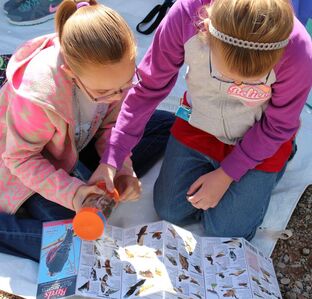
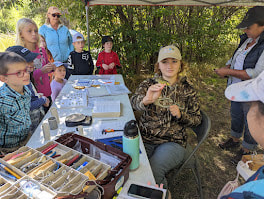
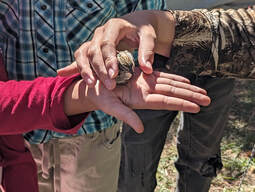
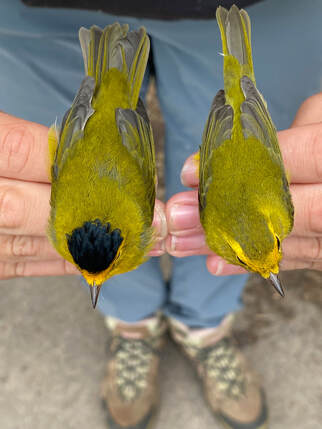
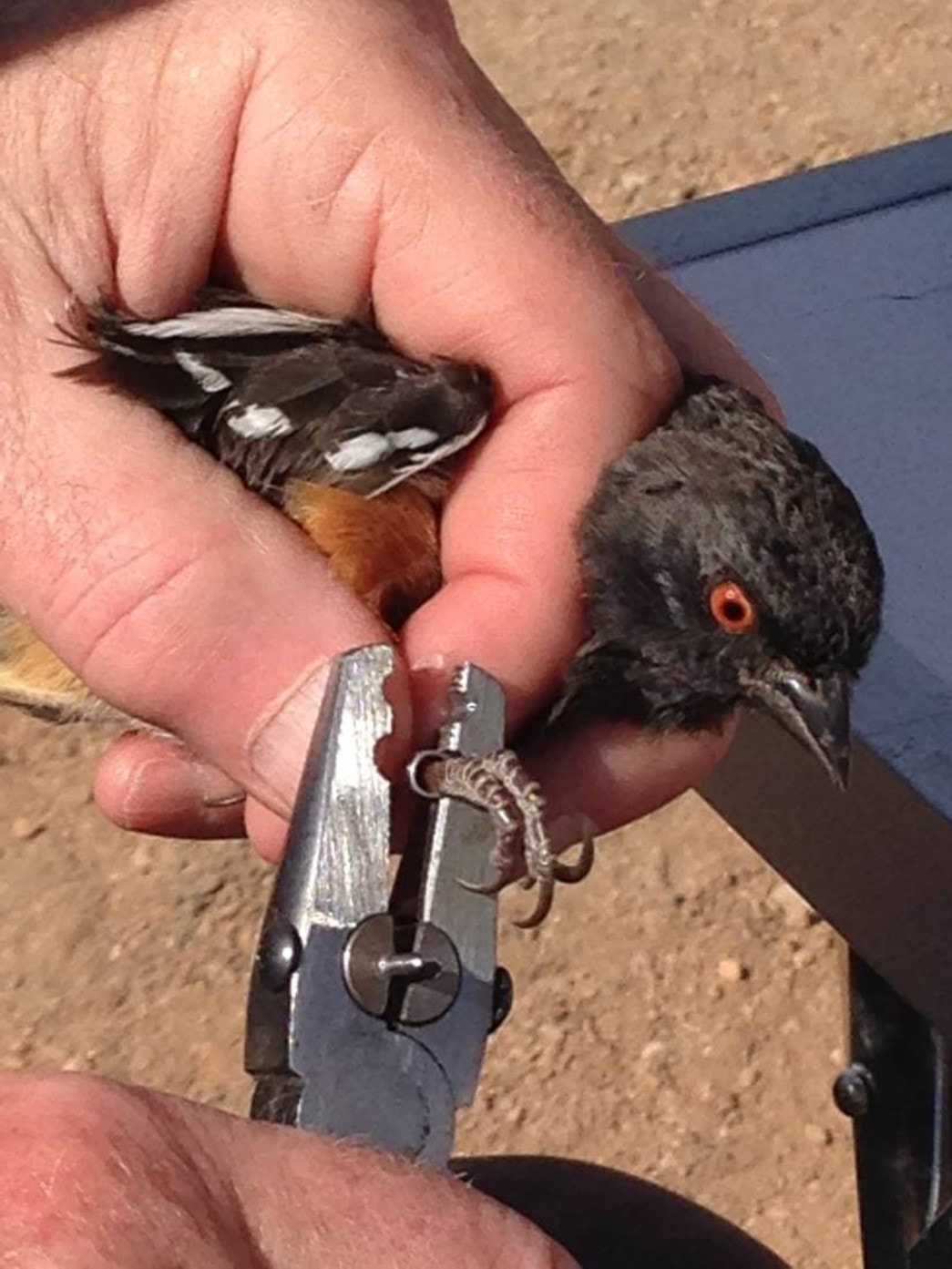
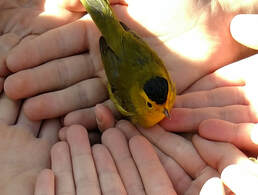
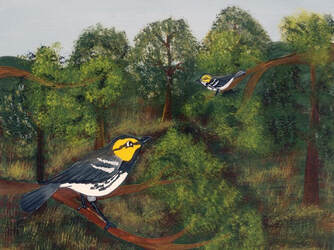
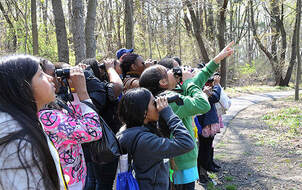

 RSS Feed
RSS Feed


